Transition Gallery was opened in a converted garage close to Victoria Park, Hackney, by artist Cathy Lomax and celebrates its tenth year this week. Now based in Regent studios near Bethnal Green, Transition continues to be an innovative part of the East London arts scene.
As well as running the gallery Cathy is an artist and publisher, producing the magazines Garageland and Arty. I recently spoke to Cathy about Transition.
Congratulations on ten years! Why did you originally open Transition?
I was just finishing my Fine Art MA at Central St Martins and was thinking about what to do next. The opportunity to take on the garage arose and I just thought it would be a good place to show work by me and my friends - somewhere we could all get together and talk about our work - basically a replacement for college.
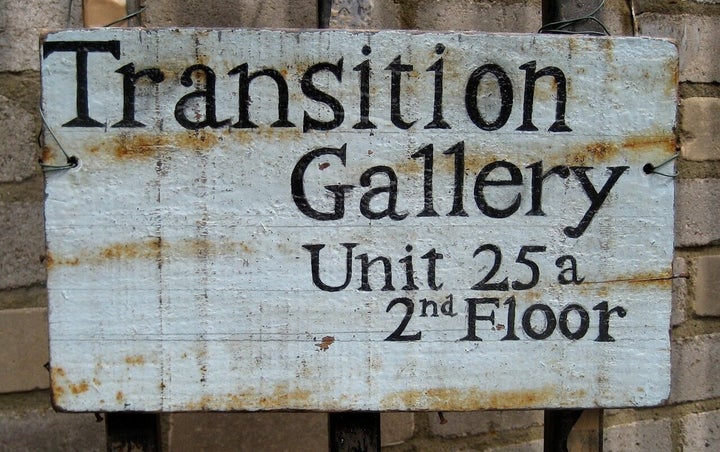
How would you describe your gallery?
The official line is artist-run, not-for-profit. Its kind of just what I do - a wrapper for all sorts of art activity. I like to think it is a space where artists can try out new ideas rather than a poor man's white cube.
How would you have described your gallery ten years ago?
I was a little less sure of its identity and I thought it would be very temporary - hence 'Transition'.
If the next Cathy Lomax came up to you and said: "I am going to open an art gallery". What would be the most important piece of advice?
Consistency - by this I mean have consistent opening hours, always be open when you say you will and keep going. So many spaces open in a blaze of enthusiasm only to close a few shows later when the glamour has faded.
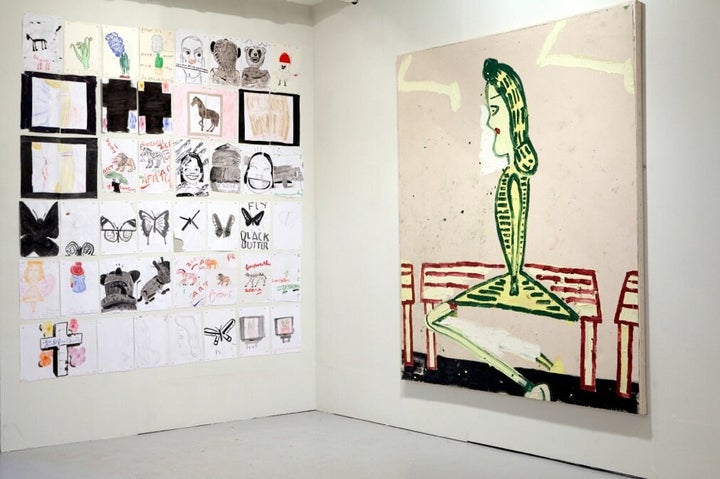
Rose Wylie at Transition Gallery
What were/are your influences as a gallerist?
I really liked the Keith Talent gallery - which was in Tudor Road, E9. It was artist run and was in an old tin box factory so very un-white cube. I was just really into galleries back in 2002. I loved Victoria Miro, which was in Cork Street back in 2002 and Maureen Paley, which was run from her house in Beck Road.
How has your own role changed within the gallery?
I don't think it has changed that much really. I try not to be as much of a control freak maybe but I still do a bit of everything. Our publications have become more and more important and I spend a lot of time editing and writing.
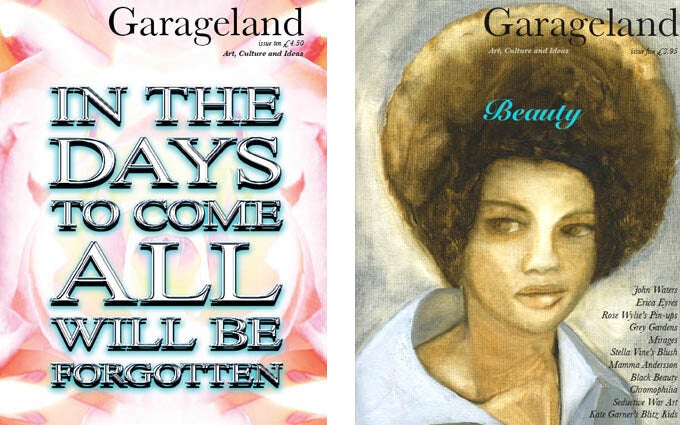
Garageland Magazine
How has the art scene changed since you opened?
The east end art scene has blossomed and then in recent years faded ever so slightly. It annoys me that some galleries have so little interest or commitment to the area that they are in. The whole idea of artist-run organisations has become more common. Apparently contemporary art has become wildly popular - but this means that people go to Tate Modern in the way that tourists visit the Uffizi in Florence - it's just something you do in London. I don't really think that contemporary art is any more appreciated or understood than it was.
How do you go about finding artists to show their work at your gallery? Has this policy changed over ten years?
I have become more knowledgeable about artists just because I have seen so many and also more ambitious in the kind of artists I ask to be in shows. I try and see as much art as I can and also people send me images and proposals for show (although it has become rarer that I see anything much that I am interested in). There has been no change of policy - we just show things that I think are interesting. I have always wanted to avoid the gallery becoming cliquey - this is something that too many galleries do and then they tend to become stuck in a niche and loose their cutting edge. So I like to include artists that I don't know and have maybe not even heard of before in projects
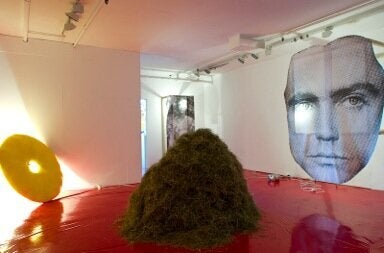
Paul Kindersley at Transition Gallery
You now represent artists, which is a relatively new thing for you.
Actually we don't really represent artists. It was something that we thought about doing and flirted with. I am not really comfortable with the idea of 'representing' artists in the traditional way. I would like to find a different way of doing it - some kind of co-op representation maybe. I really do not want to spend my time dealing with artists problems etc etc - I want to be making my own work. So at the moment we sell work by the artists we are showing but there is no representation in the way it is generally thought of.
Is there a necessary commercial aspect to your gallery now that funding has changed? How do you feel about the commercial side?
Actually funding never affected us that much. We have had very little project funding and no ongoing funding at all. I have always been very happy to sell the work on show at the gallery - it is good for the artists and helps us to pay our bills and the idea that someone loves the work enough to buy it is sort of thrilling. I hate the idea that art is bought as some kind of investment fund - but I am under no illusions. Everyone wants to buy something by an unknown for peanuts that becomes really valuable. Frieze is just a big supermarket and I don't find it very interesting. I like the theatre of a show - the way it is hung, what is next to what etc etc.

Emma Talbot at Transition Gallery
Name five artists you have shown and give me a short sentence about each of them.
Emma Talbot - has just had her third solo show which featured drawings of her sexual fantasies and her first ever sculptures which she calls 'Bad Objects'
Rose Wylie - septuagenarian painter who had a solo show at Transition in 2008, her next show is at Tate Britain.
Dominic From Luton - artist prankster, he is not limited to any one medium and has used photography, hundreds and thousands and embroidery - photographs of his Maggie Thatcher performance at Transition have recently been bought by the Saatchi collection.
Annabel Dover - her effortless paintings of nostalgic objects and cherished collections have been snapped up by numerous fellow artists for their personal collections.
Paul Kindersley - film obsessed, make up enthusiast, he can currently be seen as part of Spartacus Chetwynd's performance troop at the Turner Prize exhibition, his 'She wanted his soul...' show in 2009 was the result of winning the first Transition Gallery / Chelsea College of Art prize.
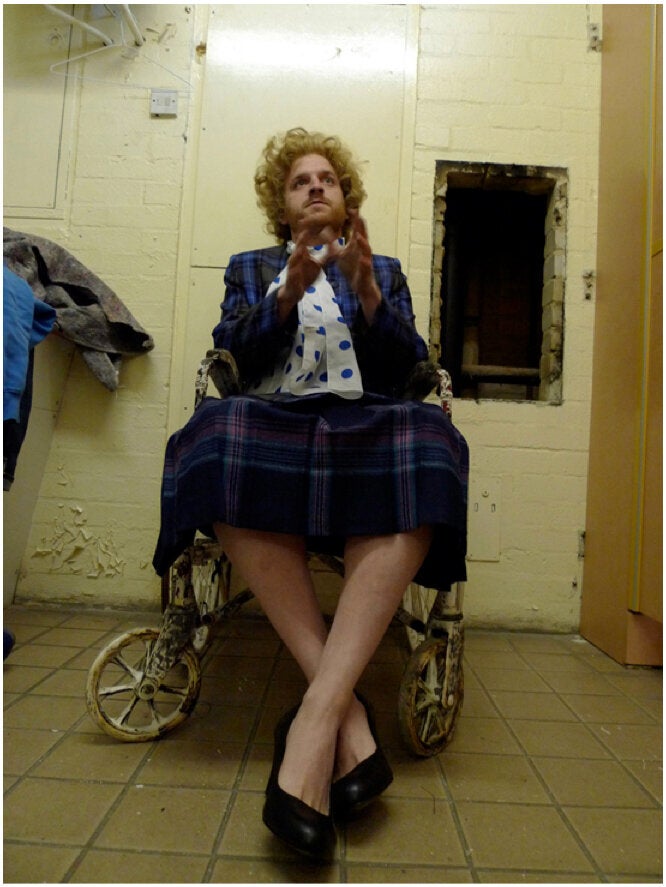
Dominic From Luton as Margaret Thatcher at Transition Gallery
Many small galleries close after a couple of years, how have you managed longevity?
By keeping our costs to an absolute minimum and by keeping myself interested. I curate some of the shows and sometimes include my own work. I also think that having our magazines Arty and Garageland which are sold through the gallery, website and distributed to gallery shops in the UK and abroad adds an extra dimension to the gallery which means more people know about us.
One of your most controversial shows was Stella Vine's first solo show, which got the tabloids in a spin. Describe what it was like for you.
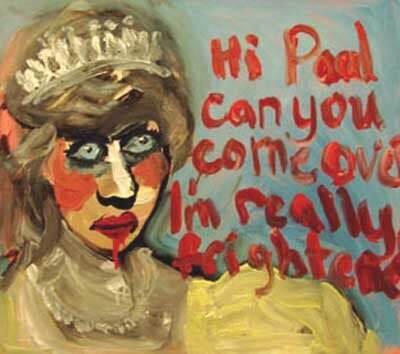
Stella Vine at Transition
It was eye opening kind of like 'the filth and the fury' or something. Charles Saatchi bought Stella's work from a show called 'Girl on Girl' - it was the first time she had ever sold her work and she had priced her small painting of Princess Diana at £700 which I thought was too expensive. Saatchi decided that he would make her the face of his new show at his gallery 'New Blood' maybe because of the subject matter of her work but also I think because he (or his PR person) found out that she used to be a stripper. She and her painting were in all the papers and they all started calling me up for stories. The stories suggested that her painting at £700 had been really cheap. After the furor people were queuing up to buy her paintings (the same stuff no one had previously wanted), arriving at the gallery with envelopes stuffed with cash. It all made me feel a bit sick really.
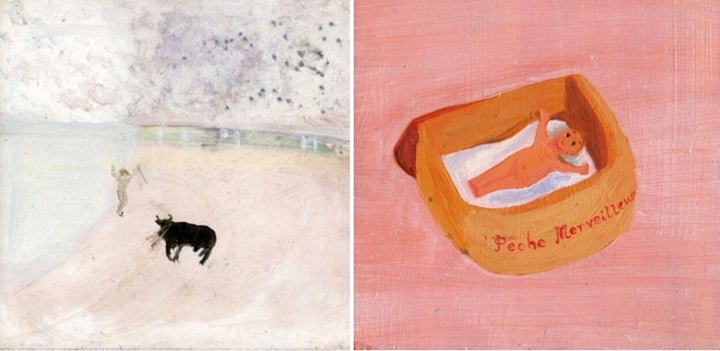
Annabel Dover at Transition Gallery
What advice do you have for new artists who have yet to show in galleries?
Put on your own show with your contemporaries and invite other artists whose work you like to be in it - getting a foothold in the art world is all about networks. It could anywhere - be creative. Don't spend money making expensive catalogues. Do put together a website - make it simple and easy to navigate.
What's next?
Next up we have 'Tourist Smoking Room' a solo show by painter David Webb (2-25 November). His paintings hover between representation and abstraction, taking in motifs, shapes and patterns from things that mean something quite particular to him. His grandmother emigrating from East Africa to the UK inspires the paintings in 'Tourist Smoking Room'.

David Webb at Transition Gallery (2-25 November)
Transition Gallery can be found at www.transitiongallery.co.uk and Garageland Magazine is on sale at all good art bookshops or by subscription.
